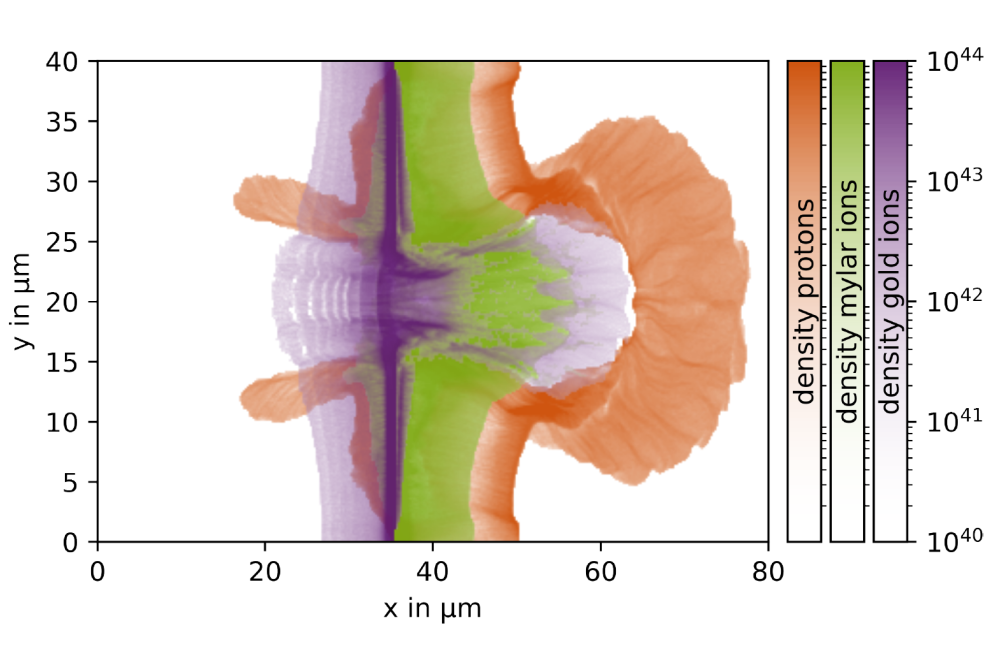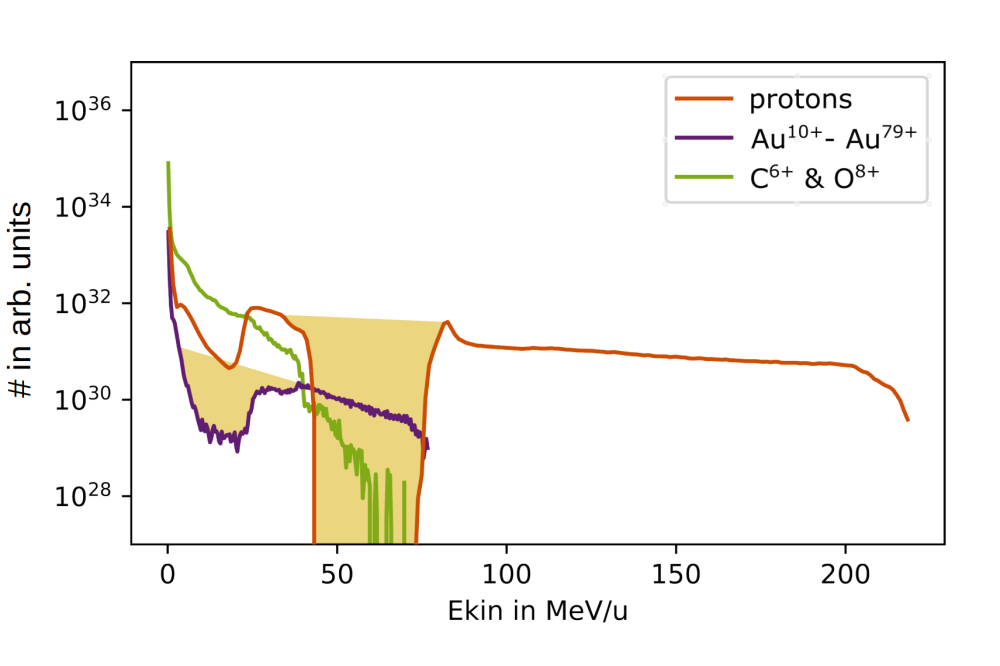Laser Ion Acceleration for ELI-NP Experiments
Introduction
Laser-driven ion acceleration is an emerging field of research and one of the primary applications of high-power lasers, with significant potential for advancement in scientific and medical applications. The extremely short ion bunches permit investigation of the flash effect in medical tumor treatment or probing of warm dense matter on the few-ps timescale, thereby providing insights into phenomena relevant to astrophysics or nuclear fusion. Laser-accelerated ions represent a promising avenue for initiating nuclear reactions on an exceedingly short timescale. While various ion acceleration mechanisms have been discussed in the literature, the majority of experiments are dominated by target normal sheath acceleration (TNSA). The exponential spectrum generated by TNSA presents a significant challenge for most applications.
Methods
Particle-in-cell (PIC) simulations are a fundamental tool in our research, allowing us to model the interaction between a laser pulse and a plasma. This method uses a fundamental approach to model the pulse and the plasma. The technique is well established and used by many codes in the community. The laser pulse is modeled on a numerical grid that samples the electric and magnetic fields. In addition, many charged particles (typically tens or hundreds of millions) represent the plasma in the simulation box. The fields exert forces on each particle, causing it to move. The resulting current generated by the particle flow is in turn coupled into Maxwell’s equations, which modify the propagation of the laser pulse. Most of the simulation time is devoted to particle propagation, which is why high-performance computers are used.
Results
We have identified a regime in which the accelerated ion spectra exhibit strong deviations from the exponential spectrum. The effect becomes clearly visible with a 100TW laser system and grows stronger with increasing laser power. Figure 1 and Figure 2 show a snapshot of the laser-driven ion acceleration and the resulting spectrum for a 1PW laser system. At this intensity, the protons are fully modulated, displaying a spectral range without any accelerated protons. Further also the gold ions exhibit a strong modulation over more than an order of magnitude. Target and laser parameters of the simulation are matching the actual laser paramaters of the 1PW systems available at the facilies ELI beamlines or ELI-NP. The simulations show a clear dependence on the target thickness and laser power, which will be evaluated in the future.
Discussion
The results obtained so far are highly encouraging for our upcoming experimental campaign, which we are currently planning. The data clearly reveal strong modulations in the spectrum of accelerated ions, encompassing not only light protons but also heavier gold ions. These findings underscore the need to refine our simulation parameters and systematically explore a broader parameter space, with the aim of determining the optimal conditions for generating the most pronounced spectral modulations. In parallel, future simulations will investigate whether this principle can be employed to enhance the energies of lighter ion species and whether it is transferable to smaller laser systems. Our current two-dimensional (2D) simulations provide valuable insight into the core physics and relevant regimes of ion acceleration, while simultaneously conserving computational resources. This efficiency enables us to conduct extensive parameter scans, which would be impractical in more computationally demanding threedimensional (3D) simulations. Nevertheless, fully 3D simulations, followed by experimental validation, will ultimately be required to establish accurate scaling laws and verify the absolute ion energies under realistic conditions. This comprehensive approach will clarify whether the observed modulations can be systematically reproduced and scaled, thereby determining the viability of these methods for different laser facilities. Furthermore, results from 3D simulations together with experiments will help us identify the most promising regimes of operation and pave the way for better controlled laser-driven ion acceleration.
This work is supported by the Deutsche Forschungsgemeinschaft (DFG, German Research Foundation) – Project-ID 499256822 – GRK 2891 'Nuclear Photonics.





